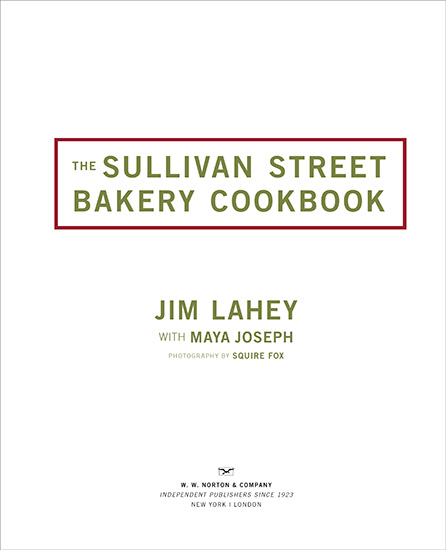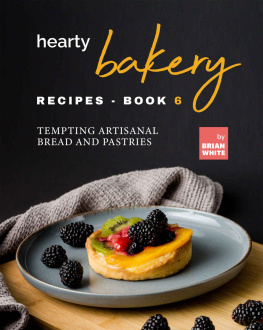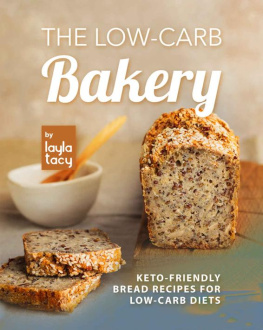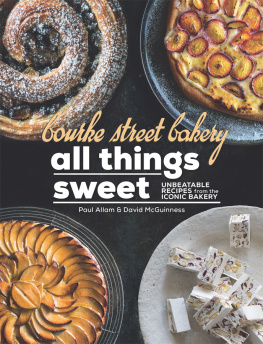
Also by Jim Lahey
MY BREAD: The Revolutionary No-Work, No-Knead Method (with Rick Flaste)
MY PIZZA: The Easy, No-Knead Way to Make Spectacular Pizza at Home (with Rick Flaste)


TO DECLAN, ANJALI, AND PIA

Traditional panettone (). Naturally leavened, with citron and raisins.
CONTENTS

SULLIVAN STREET IS ONE OF NEW YORKS MORE BEGUILING STREETS. Named after a Revolutionary War general, it begins at the southwest end of Washington Square Park. From there it ambles south, enjoying a few blocks in the Village before skipping across Houston, gliding through the elegant blocks of SoHo, careening into the chaos of Sixth Avenue, and disappearing forever.
It is a short street. In the 1990s, it was calm and shady and shimmered in the embers of the Italian neighborhood it had once been. Pinos Prime Meats and Joes Dairy and an old ravioli factory graced the street, along with a host of eagle-eyed Neapolitans who knew the genealogy of each inch of it and those who walked it. When my bakery openedin 1994my new neighbors were eager to tell me how back in their day the bakers on Sullivan Street made home deliveries, every day, rain or shine or sweltering heat, up sixth-floor walk-ups and beyond, carrying hot loaves of bread on wooden planks. (They also smiled at me gently, with a shake of the head, saying my bread was too dark, Jimmybut some things never change).
The neighborhood was changing, though, giving way to expensive art galleries, vacant storefronts, and abandoned lofts. The old Italians who rarely left the neighborhood soon muddled with the swaggering young artists streaming in. It was an odd yet amiable collision, a peculiar tincture of old world meets art world. It felt like the perfect place to start my bakery.
The breads that I wanted to make were inspired by village bakeries in Italy, but crossed with my own whims and wiles. The Italian bread I had fallen in love with in the 1980s was magnificent, well-built, living bread. It was bread that may have been baked that day but was clearly descended from something that had been made and eaten since ancient times. It was big, imperfect, crusty bread. It was not meant for slicing. It was messy and rough and meant to be ripped and dipped and respected and treasured. Its forms eternal, its functions essential, it embodied thousands of years of agricultural traditions, baking practices, and table manners. I wanted to make bread like it: a dark crackling crust that split open to reveal a creamy white interior whose hot perfumes spilled out in a delirium of aromas. If my way would eventually come to differ from the practices I had learned in Italy, that was fine. I wanted not the method but the spirit of this bread, and if it was only imperfectly Italian, or Italianish, then I would embrace that dusky territory. My bakery was like a workshop, filled with clouds of flour and gusts of wheat bran, where every available surface was a place to tinker and experiment and depart from some traditions while remaining faithful to others.
I was devoted and obsessed. I talked to anyone and everyone about the history of this bread, about its chemistry and viscosity and the grams of yeast I had used that morning and the ambient humidity of the day and the heat distribution of my steam-tube oven. Many thought I was crazy (really, though, have you ever met a baker who wasnt?). But my bread was beautiful, and I loved making it and enjoying the feeling of feeding this neighborhood.
Whenever I had time and was nostalgic for the smells and tastes of the bakeries I had loved in Italy, I would make a crostataa quick crust spread with jamor little sandwichesor a ciambellathe simplest of cakes.
Soon Sullivan Street Bakery was home to a bustling crowd of blustering artists, wary Italians, and incredibly curious tourists. Like the aging mobster who coolly traversed the streets in his bathrobe, seekingsome whisperedto authenticate the insanity plea with which he had evaded prison, we had become a part of the neighborhood.
And then, thirteen years later, my business partnership broke up, and Sullivan Street Bakery moved!
I kept the name, of coursefor the soul of the bakery will always be that of Sullivan Street, but now the bakery resides in Hells Kitchen, with a branch in the New York neighborhood of Chelsea, and another in Miami. We make the same bread and now serve what I think of as bakers foodmeals or snacks made to go with bread or cooked alongside bread, in the heat of the bakers oven. I am happy to report that my original neighbors sometimes make the trek up from SoHo to find us again.
The Sullivan Street of 1994 may have faded into the fuzzy realm of nostalgia, but its amiable personality of artsy quirkiness crossed with old-world integrity still aptly sums up our character and our mission.
Roman Bread, My Way
When I fell in love with Italian bread, it happened in Rome. I was twenty-one and there to study art. But I became obsessed with the bread. I made a practice of haunting Romes bakeries. I am a contrarian by nature, so it only piqued my interest that the bakers of Rome unanimously lifted up their hands in impatience and told me to go away. Eh! American! they would say, dont worry about this bread. Go see some palazzi! But I was enthralled. Like the gods of ancient Rome, the breads and bakeries of this city were an old and ancient cosmos, full of relics and legends and odd characters. Visiting some bakeries was like stepping back in time by a few hundred... or thousand years. Conditions were primitive. The bakers were pretty weird. And the bread was unworldly. There was pizza bianca alla romana, for instancea six foot long flat plank of bread which always gave me a distinct feeling of unease. (At first glance it looks altogether too much like a crocodiles back emerging from a river). But hot out of the oven and smelling piney and fragrant with fresh rosemary and olive oil, it was magnificent.
I soon fell into the habit of wandering Romes markets, asking all the oldest-looking women: Scusi, ma Lei sa dove posso trovare il miglior pane a Roma? O un ottimo panificio? Per favore. Excuse me, but where can I find the best bread in Rome? Or the best bakery, please? And they would send me on a meandering journey to somewhere not quite the city and not quite the country.
Inevitably, I found a crumbling, dusty, ill-lit structure. Peering into the darkness would yield little to the eye: a miscellany of wooden objects. Boards, slats, crates, tools to load and unload the oven. They rhythmic sound of the wooden tools scuffling bread in and out of the oven mixed with the quiet noises of hot bread crackling. What were the secrets of these crumbling old bakeries?
The first thing I noticed about the best village bakeries in Italy was that they didnt make twenty things. They made one or two breads. Or they made one dough, and turned that single dough into a variety of different breads. These were not French bakeries with a rigorous and obsessive method. There
Next page









